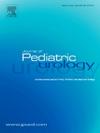An objective analysis of > 600 paired hypospadias graft measurements: Prepuce vs oral graft take and HBOT effect
IF 1.9
3区 医学
Q2 PEDIATRICS
引用次数: 0
Abstract
Introduction
Urethroplasty graft outcomes have traditionally been assessed subjectively, limiting comparison and understanding of graft success. We used standardized graft measurements to objectively evaluate graft take in primary prepucial and reoperative oral grafts, and assessed the effect of hyperbaric oxygen therapy (HBOT) in reoperations.
Aims
Primary: Validate graft area measurement as an bojective tool to compare graft take between primary and reoperative grafts.
Secondary: Correlate graft contracture with complications. Tertiary: Evaluate HBOT's impact in reoperations.
Methods
A Prospective cohort of staged hypospadias repairs (2014–2023) was studied, excluding single-stage repairs. A two-stage STAG or three-stage STAC technique was used. Prepuce was used in primary grafts, oral mucosa in reoperations. Graft length and width were measured at placement and tubularization to calculate graft area take. Complications and HBOT use were documented. HBOT was administered post-placement in reoperations as per protocol.
Results
627 grafts were analyzed. Graft take was 93 % in prepucial grafts, 92 % in +HBOT oral grafts, and 83 % in -HBOT (p = 0.011). Graft contracture and failure significantly predicted complications. HBOT significantly reduced these risks.
Conclusions
Standardized graft measurement reliably assesses graft take. Contracture ≥20 % predicts higher complications. HBOT improves outcomes in reoperations to levels seen in primary repairs.
bbbb600对尿道下裂移植测量的客观分析:包皮与口腔移植及HBOT效果。
导言:尿道成形术移植的结果传统上是主观评估的,限制了移植成功的比较和理解。我们采用标准化的移植物测量客观评价初次包膜前和再手术口腔移植物的移植物吸收情况,并评估高压氧治疗(HBOT)在再手术中的效果。目的:主要:验证移植物面积测量作为一种客观的工具来比较初次和再手术移植物之间的移植物。继发性:将移植物挛缩与并发症联系起来。第三:评估HBOT在再手术中的影响。方法:对分阶段尿道下裂修复(2014-2023)的前瞻性队列进行研究,不包括单期修复。采用两阶段STAC或三阶段STAC技术。原发移植采用包皮,再手术采用口腔黏膜。在放置和管化时测量接枝长度和宽度,计算接枝面积。记录并发症和HBOT使用情况。再手术后按方案给予HBOT。结果:共分析627例移植物。包膜外移植物占93%,+HBOT口腔移植物占92%,-HBOT口腔移植物占83% (p = 0.011)。移植物挛缩和失败是预测并发症的重要因素。HBOT显著降低了这些风险。结论:标准化的移植物测量可靠地评估移植物摄取量。挛缩≥20%预示更高的并发症。HBOT将再手术的效果提高到初次修复的水平。
本文章由计算机程序翻译,如有差异,请以英文原文为准。
求助全文
约1分钟内获得全文
求助全文
来源期刊

Journal of Pediatric Urology
PEDIATRICS-UROLOGY & NEPHROLOGY
CiteScore
3.70
自引率
15.00%
发文量
330
审稿时长
4-8 weeks
期刊介绍:
The Journal of Pediatric Urology publishes submitted research and clinical articles relating to Pediatric Urology which have been accepted after adequate peer review.
It publishes regular articles that have been submitted after invitation, that cover the curriculum of Pediatric Urology, and enable trainee surgeons to attain theoretical competence of the sub-specialty.
It publishes regular reviews of pediatric urological articles appearing in other journals.
It publishes invited review articles by recognised experts on modern or controversial aspects of the sub-specialty.
It enables any affiliated society to advertise society events or information in the journal without charge and will publish abstracts of papers to be read at society meetings.
 求助内容:
求助内容: 应助结果提醒方式:
应助结果提醒方式:


